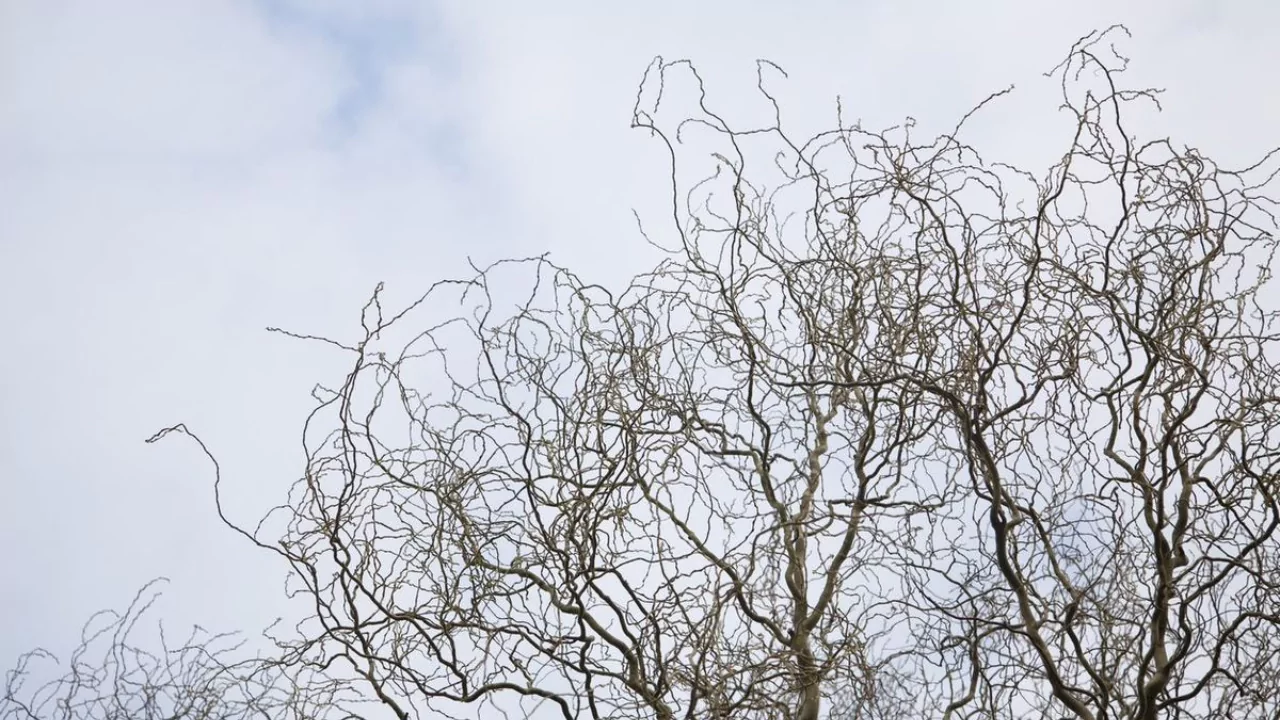
If you have a passion for willows, consider corkscrew willow tree (Salix matsudana ‘Tortuosa’). Unlike the weeping variety, these trees exhibit an upright form. Their twigs and branches initially grow vertically straight up before horizontally sprawling outwards.
Their branches having a twisted appearance gives them a unique look that is often utilized in dried floral arrangements. In summer, their limbs undulate in the breeze while in winter their curves add interest to the barren landscape.
Another advantage of corkscrew willow is its rapid growth rate. It attains over 24 inches per year of growth like most willows and reaches a mature height of 25 to 30 feet with a width of 15 to 20 feet.
Now for the bad news: like other willows, corkscrew willow is short-lived. Most fast growing trees tend to have brittle branches that are easily susceptible to breakage. Corkscrew willow is no exception.
Even though corkscrew willow is hardy in USDA plant hardiness zones 4 through 8, living in an area prone to high winds or ice storms comes with a constant struggle of dealing with dead branch superstructure due to constant branch breakage and dead branch accumulation.
Regardless of any other landscaping trees, do not plant corkscrew willows near the house or over driveways and streets where potential damage can occur from falling branches of the willow tree.
Corkscrew willow exhibits another problem of aggressive root system with shallow roots that actively seeks moisture. This can lead to destruction of sewer lines along with paving sidewalks and patios. Plant these well away from plumbing pipes and rigid structures while maintaining soil moisture to keep roots from venturing invisibly.
In ideal conditions, a twisted corkscrew willow specimen makes for an exceptional ornamental feature. However anticipate replacement every fifteen years after initial planting.
Planting Corkscrew Willow
Corkscrew willows are usually propagated using cuttings. Either way, it is easiest to purchase a corkscrew willow tree from a nursery. Ensure your corkscrew willow has full sun, partial shade or dappled sunlight.
Although corkscrew willows grow well in most soil types, they thrive in slightly moist loam soils best. Sandy soils can be problematic as they drain too quickly and require regular watering. On the other hand, clay soils that do not drain well can lead to root rot diseases and be detrimental to the tree’s health.
Corkscrew willows can be planted anytime between early spring and late summer. If you live in gentler climates, you have a wider window of planting throughout the year. Prepare a hole equal to the depth of the root ball while being twice as wide. Place the willow tree into the hole.
Surrounding soil should be leveled 1 inch below the exposed root ball’s surface. Add around 50% backfilled dirt but first pour 2 gallons of water into the hole, allowing it to drain before adding remaining soil back until lightly tamped down gently with a foot.
Maintain a 2 to 3-foot bare area around the base of the tree and apply 2 inches of mulch. Corkscrew willows are especially vulnerable to lawn mower and trimmer damage, which can open the trunk to infection. Keeping an area clear of grass eliminates this risk.
Corkscrew Willow Care
For the first season, water the corkscrew willow weekly, maintaining consistent moisture in the soil 1 inch below the surface. After that initial period, watering can be spaced out slightly more. Unless your soil is extremely poor, fertilization should not be necessary with corkscrew willow.
Should growth be slow and foliage appear pale, apply springtime fertilization—1 cup of 10-10-10 distribution beneath the canopy—to boost vitality. A corkscrew willow planted within a fertilized lawn likely receives sufficient nutrients and does not require further feeding.
Annual pruning is recommended for disease management or to remove any branches that rub against one another. Prune to lighten the crown for improved light penetration. Clear broken branches promptly after wind events from like storms.
Pests and Diseases of Corkscrew Willow Trees
Several pests and diseases affect corkscrew willows, although most only cause superficial harm. Willows are ravaged by Aphids during springtime. They extract sap from the leaves and stems, resulting in wilting.
Aphids leave behind a sticky substance known as honeydew which can attract sooty mold – a black fuzzy growth. While aphids do what they want to large trees, predatory insects usually take care of business and move in to control the population. Large tree treatment is impractical.
Some other pests that affect Salix Matsudana are gypsy moths, imported willow beetles, borers, willow borer and more. Generally these pests don’t pose a threat to healthy trees because they have considerable defenses against attackers if they are planted into deep full sun positions with adequate watering and fertilization when needed.
Galls or root rots present the most severe illness for corkscrew willows. Observe the base of trunk for blackish or brownish turfy overgrowths. These galls slow stump dieback but eventually removal becomes vital all around.
Corkscrew willow tree displays susceptibility towards powdery mildew and leaf spots too. In their case no intervention is warranted.